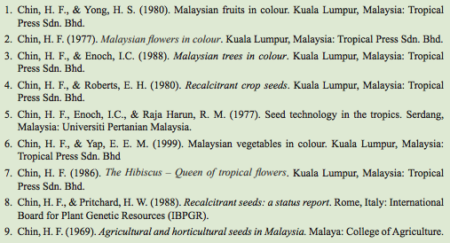The Journal of Tropical Agricultural Sciences has a nice appreciation of the life and career of Prof. Chin Hoong-Fong, who died recently. He was a pioneer of seed conservation research, as the list of selected papers by Prof. Chin included in the tribute makes abundantly clear.
